1. Avery Street Historic District
The Avery Street Historic District in Wood County is a large, primarily residential area that developed as Parkersburg’s first “suburb” in the late 19th and early 20th centuries. Located within the area is Sumner School, which once served the entire Parkersburg black community, grades 1-12. NR

2. G. W. Henderson Plantation (Henderson Hall)
One of the few plantations left in the state is Henderson Hall in Williamstown. Built in 1836 overlooking the Ohio River, this three-story, 29-room Italianate mansion was the focal point of social and political life for almost two centuries. Period pieces are still intact and include a rosewood piano, the original wood floors, a collection of rare clocks, and a 12-foot gilt mirror, with 17th Century furnishings and portraits still in place.
3. Sumner School
Sumner High School in Parkersburg, established in January 1862, was reputedly the first free school south of the Mason-Dixon Line and was established two years before West Virginia had a public school system. The school was sponsored by several members of the Wesleyan Methodist Church, then standing on the hillside above Green Street. In 1889, the present site of Sumner School was bought. The name Sumner came from a renowned Massachusetts senator, Charles Sumner, a strict abolitionist and foremost advocate of anti-slavery in Congress. Sumner gave such a forceful speech against the evils of slavery that it angered one of his fellow congressman, Preston Brooks, to the extent that he struck Sumner several times with his heavy cane. Sumner School once served the entire Parkersburg black community, grades 1-12, before closing in 1955.

4. Z. D. Ramsdell House
The historical Zopher D. Ramsdell House, the first brick home built in Ceredo, sets along the banks of the Ohio River and is said to have helped hide slaves on the Underground Railroad. The Ramsdells were strict Quakers and abolitionists and maintained historic documents and artifacts. Visitors may tour the house Sundays, from 2-4 p.m., except holidays. NR
5. The Jenkins Plantation
Since 1835, a large, brick mansion has stood sentinel on the banks of the Ohio River, home of the Jenkins family, most notable being General Albert Gallatin Jenkins, C.S.A. His family owned more than 4,000 acres and maintained a successful plantation at Green Bottom, in what was then western Virginia. As on most plantations, slaves provided the labor and craftsmanship to build the plantation buildings, working the fields and serving the main house. At Green Bottom, slaves made bricks and hewed logs for the building of Jenkins’ brick plantation house in the 1830s. Not all slaves were content to stay on the plantation, and like other owners in the Ohio Valley, Jenkins had difficulty keeping his slaves. Abolitionists, both white and African American, often operated safe houses or Underground Railroad stations near the free banks of the Ohio River, tempting slaves to cross to possible freedom. According to Cabell County records, in 1827 Jenkins was sued by James Shelton, a local slave catcher and owner of a plantation, for not paying enough for the return of an escaped slave.
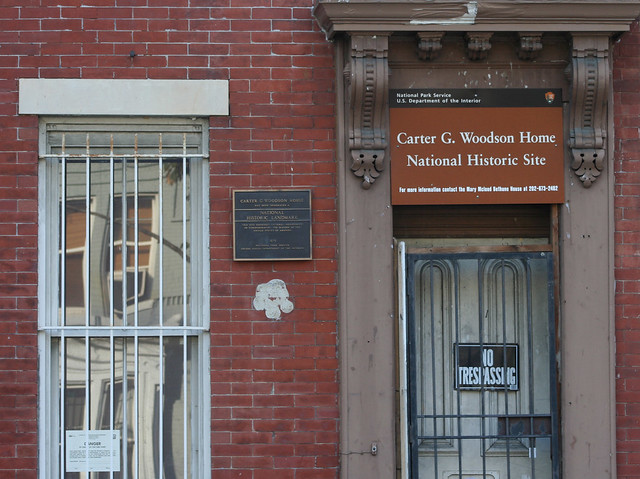
6. Carter G. Woodson Memorial
In the fall of 1995, the city of Huntington erected a statue in honor of Dr. Carter G. Woodson, “Father of Black History.” Woodson had served as principal of Douglass High School in Huntington and dean at West Virginia State College, Institute. After earning a Ph.D. from Harvard University in 1912, he published the influential Journal of Negro History, the Bulletin of Negro History and a series of seminal books. In 1926, he launched “Negro History Week,” which has been expanded to “Black History Month.” The statue stands in the community along Hal Greer Boulevard in Huntington.
7. Douglass Junior and Senior High School
The Douglass Junior and Senior High School stands as a symbol for the black citizens of Huntington. The school served as a cultural and educational center for the black community for nearly 40 years. Among the graduates of Douglass was Carter G. Woodson, the noted black essayist, historian and activist. In 1915, he founded the nation’s oldest black history organization and the Association for the Study of Afro-American Life and History. NR
8. Canty House
Now a part of the holdings of West Virginia State University, the Canty House was privately built and owned until the 1960s, when the college purchased it. Since its purchase, West Virginia State University has used the Canty House as an office building, as the campus health center and currently is the site of the college’s Sports Hall of Fame. Originally the building was the residence of “Colonel” James Munroe Canty, one of the early instructors at the West Virginia Colored Institute. He was appointed as its “Superintendent of Mechanics” in January 1893 upon Booker T. Washington’s recommendation to Principal J. M. Hill. NR

9. Booker T. Washington Memorial
The famous black educator spent his early life in Malden near Charleston. Washington established the country’s first vocational school for African Americans in Alabama in 1881. Sculptor Bill Hopen of Sutton created the likeness, which was erected in 1985.
10. Garnett High School
Garnett High School is associated with events and processes that have been important parts of the growth of education in Charleston and the Kanawha Valley. Named for Henry Highland Garnett, a noted black clergyman, abolitionist and diplomat, the school opened in 1929 and closed in 1956. Garnett High was known for the quality of its programs and curriculum. Among famous graduates were Tony Brown, Dr. John C. Norman, Rev. Leon Sullivan and Lewis R. Smoot, Sr.
11. Booker T. Washington Boyhood Cabin
Located just behind the African Zion Baptist Church, Booker’s cabin was built to match a photograph of his home. Booker T. Washington had a major influence on southern race relations and was the dominant figure in black public affairs from 1895 until his death in 1915. Born into slavery and illiteracy, Washington rose up to become the foremost educator and leader of black Americans at the turn of the century. In 1865, the nine-year-old Booker walked with his family 225 miles from Hales Ford, VA, to his freedom home in Malden. There he labored as a salt-packer and worked in the coal mines before becoming a houseboy for the wife of Lewis Ruffner, owner of the mines. She encouraged Booker to continue his education and, in 1872, he entered the Hampton Agricultural Institute. A forceful speaker, Washington became skilled in politics. Powerful and influential in both white and black communities, Washington was a confidential advisor to U.S. presidents. For years, presidential political appointments of African Americans were cleared through Washington. A man who overcame near-impossible odds himself, Booker T. Washington is best remembered for helping black Americans rise up from the economic slavery that held them down for so long after they were legally free citizens.
12. East Hall
East Hall is now the oldest building on the West Virginia State University campus. For more than 75 years, it served as the college president’s home, bearing silent witness to several historic periods in American education. During the building’s existence, “The West Virginia Colored Institute,” which began under the nation’s 1890 Land Grant Act, was transformed from a small school to “West Virginia State University,” an institution of higher education rendering exceptional service to the nation as well as the state’s black communities. NR

13. Heritage Towers (Exhibit Facility/Museum)
This historic exhibit, titled “From Slavery to Statehood,” tells the story depicting African-American contributions in West Virginia. The historic event created an opportunity for the interpretive history on the role of African Americans before, during and after emancipation from slavery. The exhibit continues with the formation of West Virginia, blacks in the coal mines and the building of the railroad system, to the establishment of black schools and renowned people of African heritage from West Virginia. $
14. African Zion Baptist Church
Organized in the 1850s as the first black Baptist Church in western Virginia by the Wayne, Isaac, Sullivan, Johnson and other African- American families during the era of slavery. In 1872, a legendary early minister, Rev. Lewis Rice, built the present church building. Booker T. Washington attended the church as a boy and returned from Hampton Institute to teach and later be married to a Malden, West Virginia girl, Fannie Norton Smith. NR

15. St. Paul Baptist Church
St. Paul Missionary Baptist Church of St. Albans was established in 1867 by Rev. Moses P. Hall in the home of Mr. and Mrs. Henry Brooks, with the cooperation of families living in the vicinity of the Coal River. The first church was constructed and completed in 1872 on what is now Pennsylvania Avenue, two and one-half blocks south of Main Street. In 1884, ground was purchased for the second building, now on the southwest corner of Eighth Avenue and B Street, which was dedicated in 1885. The third and present structure was built in 1921 for $50,000. Included were an above-ground basement, auditorium and balcony. The first service was held in the basement in 1923. This edifice was designed and supervised by the eminent pastor, Rev. J. Thomas Reid. The church was completed and dedicated during Christmas week of 1925.
16. Simpson Memorial Methodist Church
Simpson Memorial United Methodist Church is a focal point of a central Charleston neighborhood that has been, for many years, home of African Americans. The church is significant to the community, which has traditionally carried out economic and cultural practices vital to maintaining its historical identity. The church building, dating to 1914- 1915, is the oldest in the area and still stands on Shrewsbury Street.
17. Spring Hill Cemetery
This cemetery sits on a hill overlooking the central business district of Charleston. Its historical significance is a tribute to the founders of Charleston and the area. Among those interred are Rev. Lewis “Father” Rice, Samuel Starks and Reverend S. R. Bullock. NR

18. African-American Heritage Family Tree Museum
Dedicated to the preservation of West Virginia’s African-American history, this museum has a unique collection of photographs, family histories, and household, cultural and coal-mining artifacts. $
19. Camp Washington-Carver
This Fayette County complex is a group of buildings and facilities that have achieved exceptional importance within the past 50 years as the focus of cultural activities and events significant in West Virginia’s black history. Originally named The Negro 4-H Camp when it was dedicated in 1942, Washington-Carver served from 200 to 1,600 black youth in vocational agriculture, soil conservation, home economics and 4-H standards. It survives today as a well-preserved example of one of West Virginia’s most ambitious Works Progress Administration (WPA) projects. The camp was renamed by West Virginia State College for Booker T. Washington and George Washington Carver. Continued use of Camp Washington-Carver for educational and entertainment purposes was assured in 1979 when ownership of the complex was passed to the West Virginia Division of Culture and History.

20. Kimball World War I Memorial
This building is reported to be the first ever dedicated to black veterans. It also served as an important recreational and cultural center for black and white communities in the booming Southern West Virginia coalfields. NR
21. Bramwell Historic District
Bramwell, located on the western edge of Mercer County, is approximately one and one-half miles from the Virginia border and was the headquarters of the Pocahontas coalfields. Black miners played a substantial role in the development and working of the fields. The Bramwell Additions Historic District represents the economic and social development of minorities in the coalfields. NR
22. Bluefield Colored Institute (Bluefield State College)
Bluefield Colored Institute was established in 1895 as an institution of higher learning for the growing African-American population in Southern West Virginia. The college addressed this region’s need for affordable, accessible higher education. NR
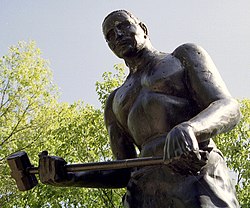
23. John Henry Statue
According to the legend of John Henry, “Steel-Drivin’ Man,” he was seven feet tall and could do the work of 30 ordinary men. Henry was said to have died shortly after proving he could outwork the new steam-powered drill in cutting the Big Bend tunnel of the C&O Railroad in Talcott. In 1996, the U.S. Postal Service memorialized his legend by dedicating a postage stamp in his honor. A statue of Henry towers atop the mountain on Rt. 3 through which the railroad tunnel runs.
24. Lewisburg Cemetery (Dick Pointer grave)
The cemetery surrounding Old Stone Church was established in 1797. Across the street is the grave of Dick Pointer, a black slave who distinguished himself at the Indian attack on Fort Donnally on May 29, 1778. He died a free man in 1827.
25. John Wesley Methodist Church
This church, of colonial architecture, boasts a cupola belfry on the roof and inside features include high ceilings and slave galleries along the side and back. This 1820’s Hade-made brick building included additions made to the front in 1835 by John Dunn.
26. Maple Street Historic District
Maple Street Historic District is a relatively small grouping of individual houses that have historically served the black population of Lewisburg. The area is significant as the only architecturally intact area that serves as the focal point of black history in Lewisburg. Located atop the highest residential hill, known as “Gospel Hill,” it contains the highest concentration of intact “worker’s” housing. It overlooks the older, more established buildings of the Lewisburg Historic District and also represents a small, intact working class neighborhood from Greenbrier County’s turn-of-the-century boom period. NR
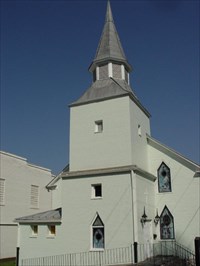
27. Mt. Tabor Baptist Church
Mt. Tabor Baptist Church is located at the corner of Court and Foster Streets in Lewisburg. The church traces its roots back to the 1780s, being among the oldest Baptist units established in what is now Southern West Virginia. The present building dates from 1832. Of special interest in the evolution of Mt. Tabor is its transfer from a white to black congregation after the Civil War. Such transfers were not uncommon. But the decision in a court of law that blacks were the rightful successors to the continuation of the old body of trustees was not only an exceptional method of transfer but also an unusual decision. NR
28. Weston Colored School
The Weston Colored School served as the only educational facility for black youth in segregated Weston from 1882 through May 1954. It was the fourth school building erected with public funds specifically for black children in West Virginia. Eight grades were taught to children ranging in age from six to 16. NR
29. Second Ward Negro Elementary
This elementary school represents African-American history in Monongalia County from 1938 to 1954, the years during which it functioned as a school for African Americans and as a community center for Morgantown’s black population. It looks much the same today as it did in 1938. Built with a grant from the Works Progress Administration (WPA), First Lady Eleanor Roosevelt attended the school’s dedication in 1940. The school closed in 1955 following integration. NR
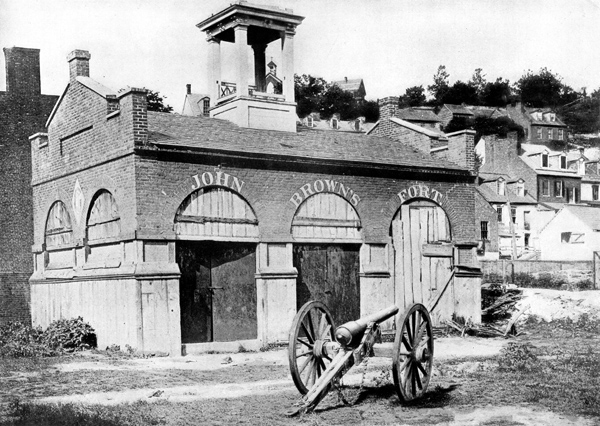
30. John Brown Fort
Site where John Brown, his sons and at least five known black men (Lewis Sheridan Leary, Dangerfield Newby, John Anthony Copeland, Shields Green and Osborn Perry Anderson), attempted to seize the federal arsenal at Harpers Ferry on October 16, 1859. The intent was to gain enough weapons to arm an insurrection of anti-slavery activists and slaves. The raid was discovered and John Brown and his men were captured in the building. Brown was hanged in Charles Town on December 2, 1859. NR

31. John Brown Museum
This unique museum details John Brown’s hatred of slavery tracing his exploits and depicting scenes from his daring raid on Harpers Ferry.
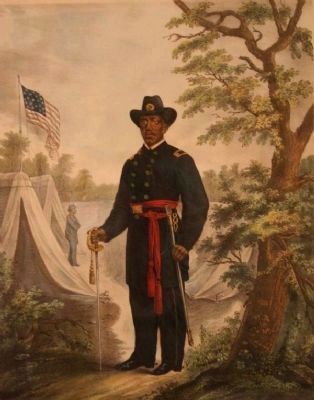
32. Martin Delany Memorial
Martin Robinson Delany was born a free black in Charles Town in May 1812. The Delany marker is on property owned by Star Lodge #1, Free and Accepted Masons, Most Worshipful Prince Hall Grand Lodge of West Virginia, Inc. and is located at the corner of West Avis and South Lawrence Streets. Erected and dedicated in 1999 by members of Star Lodge, it is believed to be the only public tribute to Delany in West Virginia. Acknowledged to be the first Black Nationalist, Delany was closely associated with Frederick Douglass, John Brown and other black leaders and white abolitionists.

33. Fisherman Hall
Located at the northeast corner of South West and Academy Streets in Charles Town, Fisherman’s Hall was built for the local tabernacle of the Grand United Order of the Galilean Fishermen to support community development and economic empowerment of blacks in Jefferson County. Over the years, the building has served as a black community center and a meeting place for Star Lodge Masons, John Brown Elks Lodge, Knights of Pythias, American Legion Post #63, church services and finally, a tavern. Legendary showman and comic Silas Green performed in the hall as well as other show business figures. The cornerstone, “Galilean Temple June 6, 1885,” is located on the northeast corner of the building.
34. First Black School in Charles Town
In 1865, the Freedmen’s Bureau, working with the American Missionary Association, established schools in Jefferson County for the newly freed slaves. The first black school in Charles Town was at the residence of Achilles Dixon, located on the corner of Liberty and Samuel Streets. Enis Wilson, a student from Storer College, became the first black teacher at the Liberty Street School. The home served as a school until the county began its own system for providing public education for black students and built a brick schoolhouse on Harewood Avenue (now Martin Luther King Jr. Avenue) sometime between 1867 and 1874.

35. Star Lodge #1 Free Masons
Located at the corner of Avis and South Lawrence Streets is one of the oldest stone structures in Charles Town. The land, purchased from Charles Washington in 1791, was used to construct the building circa 1795. Star Lodge #1, AF and AM, Queen of the Valley Lodge #1558 and The Order of the Odd Fellows purchased it in 1885. The Odd Fellows sold its share of the building to the Star Lodge in June 1927, however The Free and Accepted Masons still own the structure. NR
36. St. Philips Episcopal Church
The vision for St. Philip’s Episcopal Church, Charles Town, first originated in the late 1860s. In 1876, it was reported that $200 had been secured for a building “for work among the colored people.” The chapel was built in 1887. Until the chapel was completed, the “colored” Sunday School, directed by its first superintendent, Bushrod Washington, met on the second floor of the town hall, a building still standing on the corner of Washington and George Streets. The church also served as an emergency community hospital during the smallpox epidemic in the early 1900s.
(source: http://www.wvcommerce.org/travel/thingstodo/history/multicultural/africanamericanhistory/sites.aspx)



I precisely wanted to say thanks all over again. I am not sure the
ReplyDeletethings I might have implemented in the absence of the type of pointers shared by
you relating to my situation. Completely was the scary circumstance in
my position, nevertheless taking a look at the very expert technique you handled
that made me to weep over delight. I'm happier for your advice as well as hope you find out what an amazing job you are always getting into instructing many people all through your site. I'm certain you haven't met all of us.
Here is my webpage ; Carver boat
Take a memorable African American Student Tours? The African-American legacy is rich with stories spanning continents and centuries. Let Great Adventure Tours experienced staff plan all of your African American Student Tours needs. Your Group will discover this extraordinary cultural heritage as you explore the Detroit, Windsor and Niagara Falls sites and sounds drawn from the roots of African-American History.
ReplyDelete